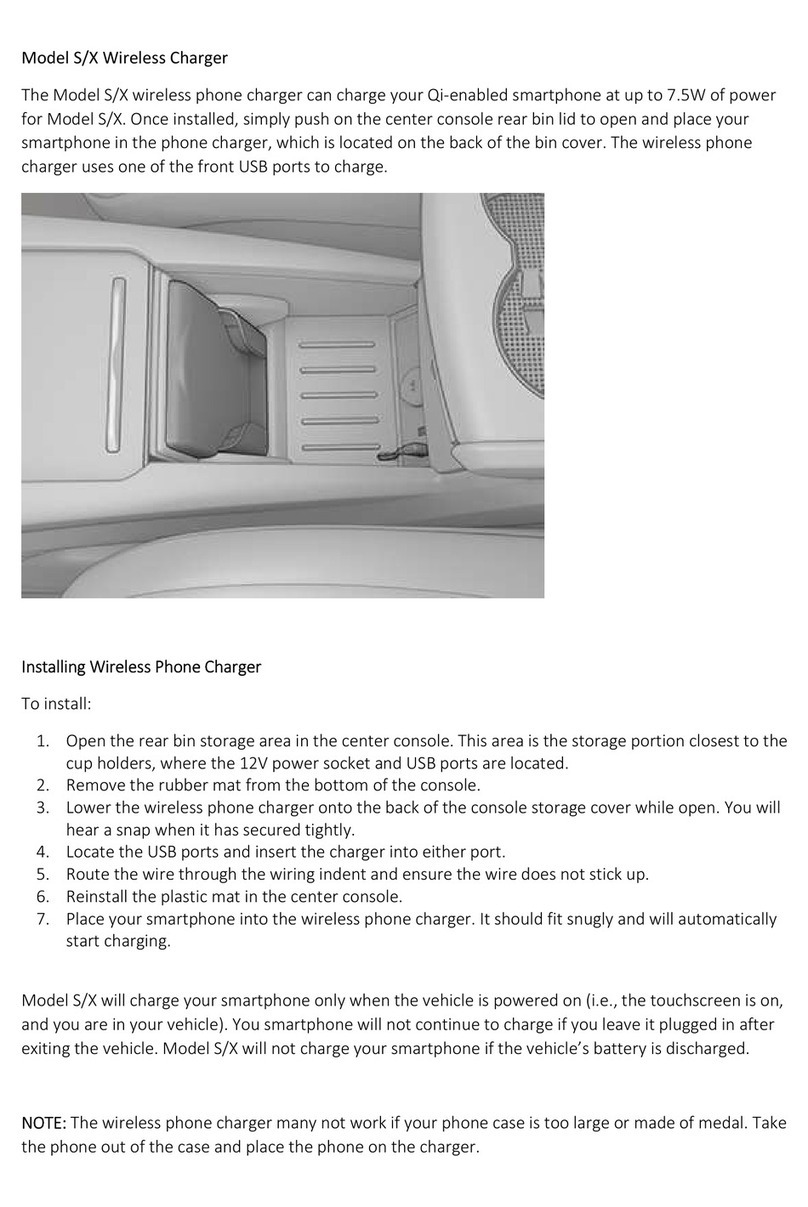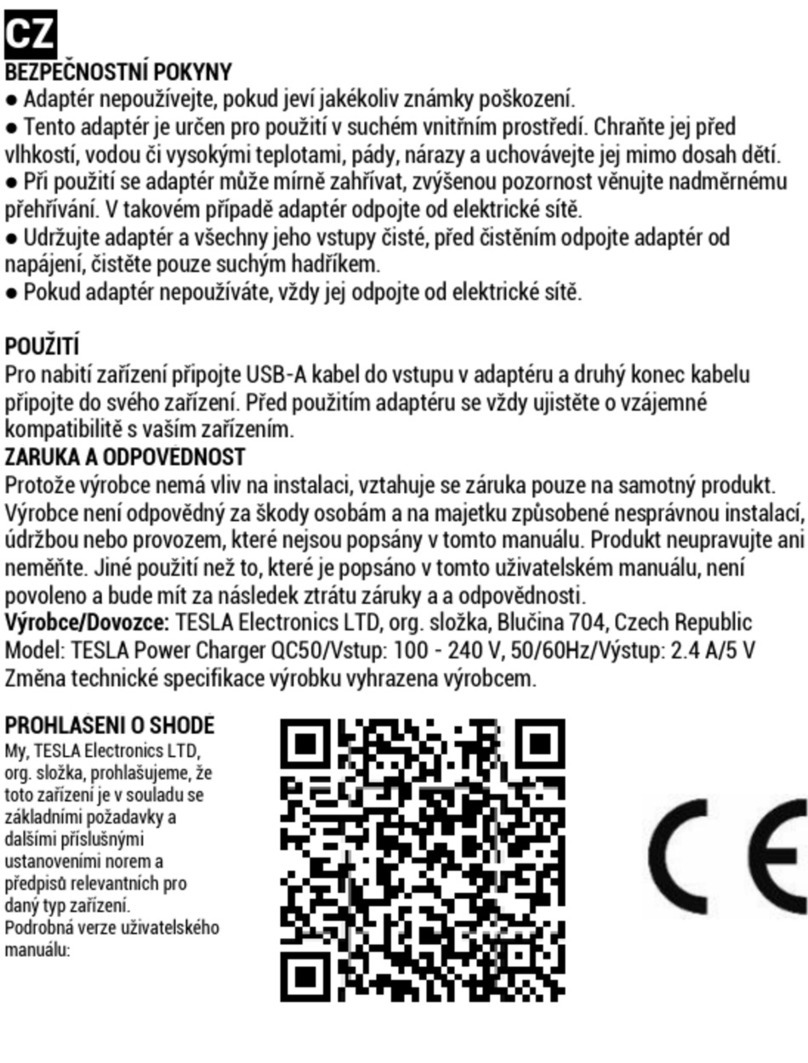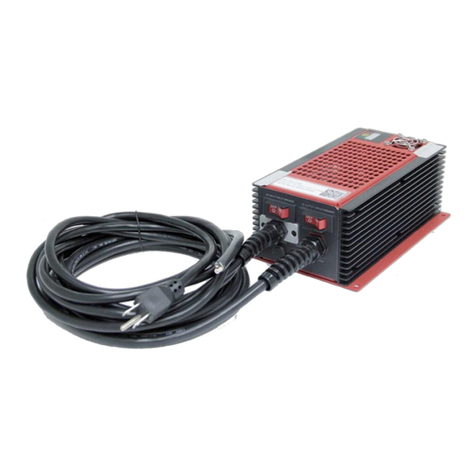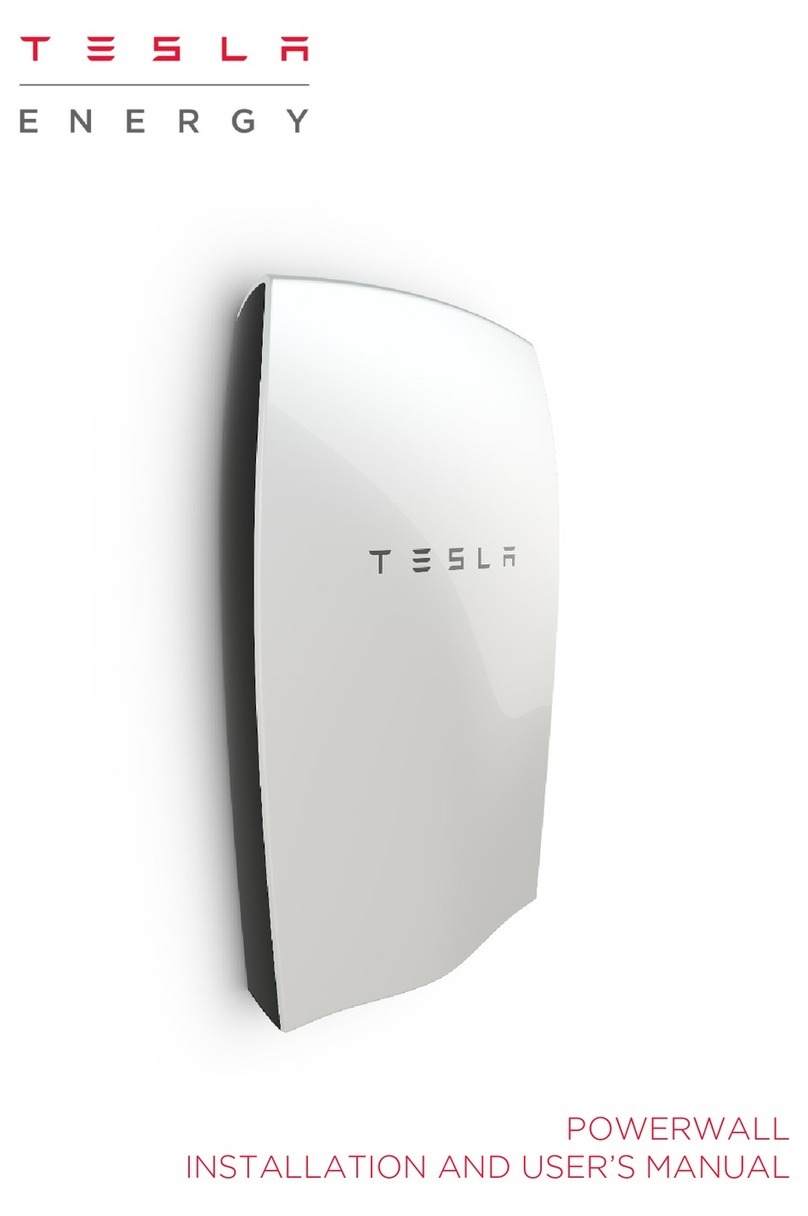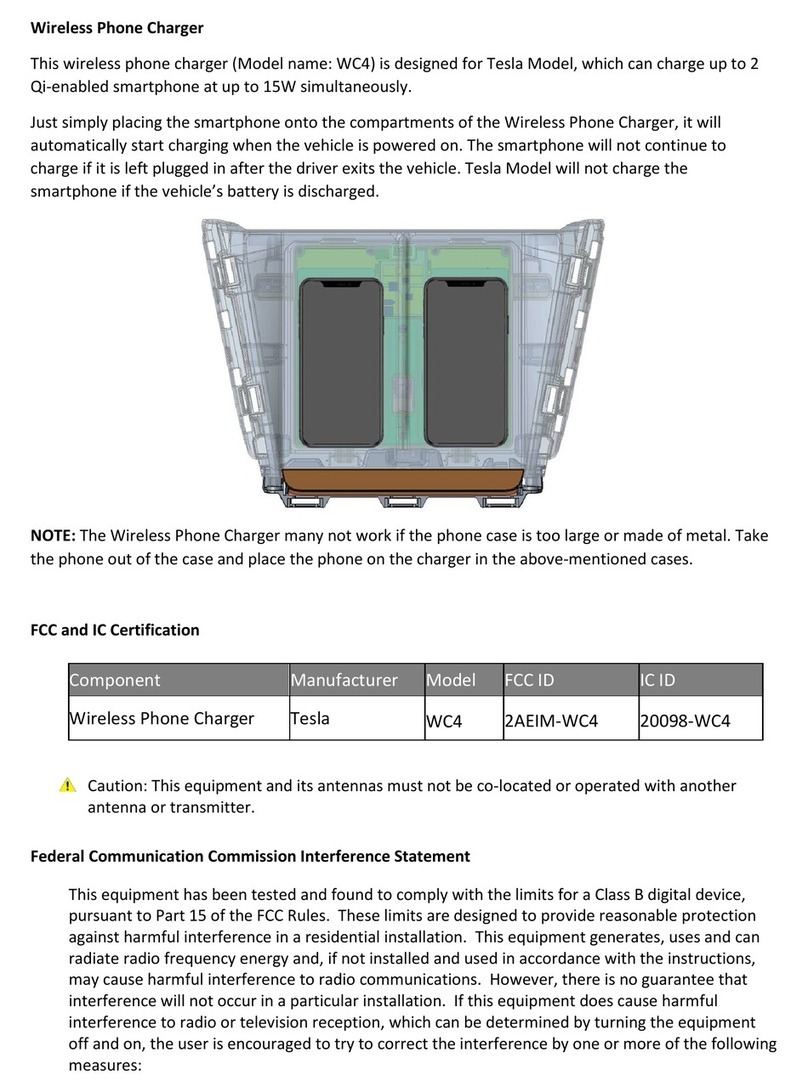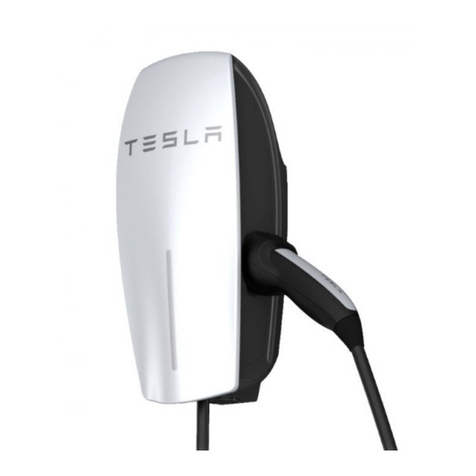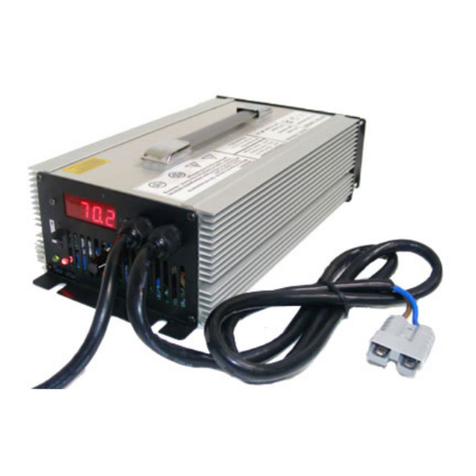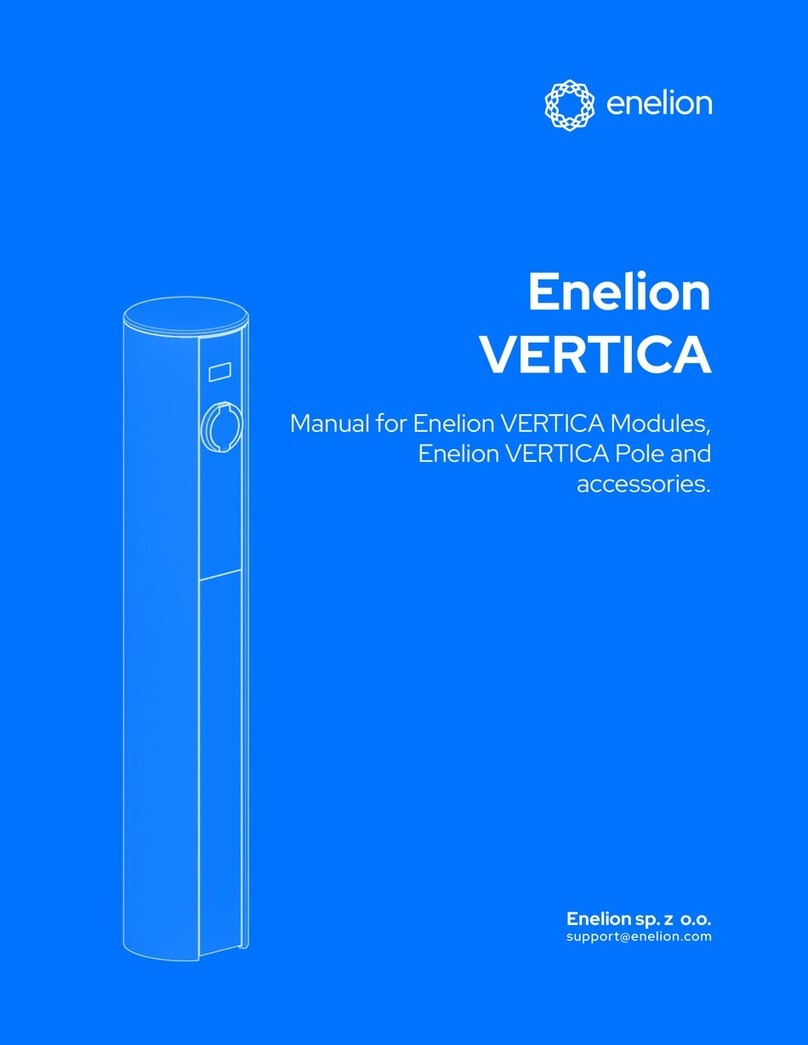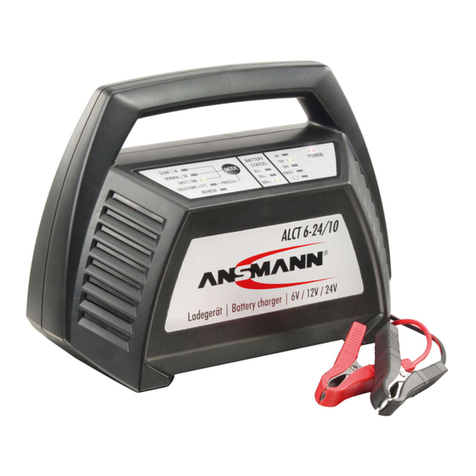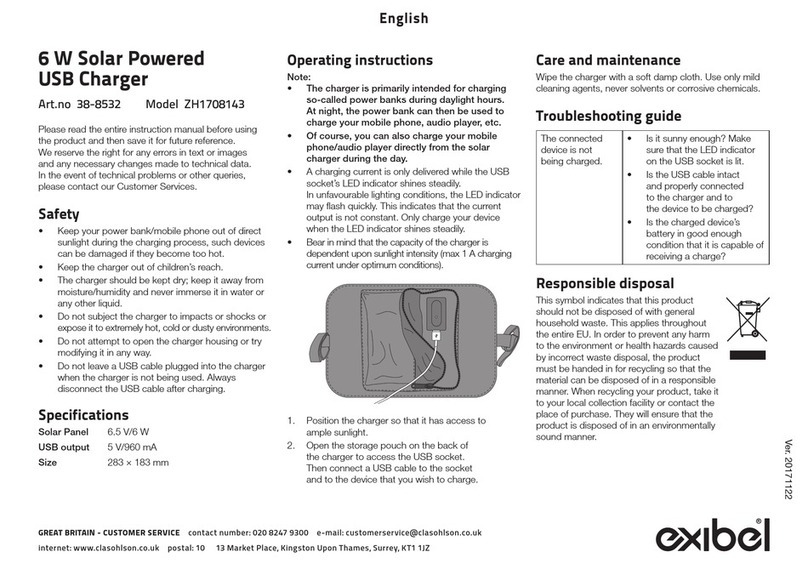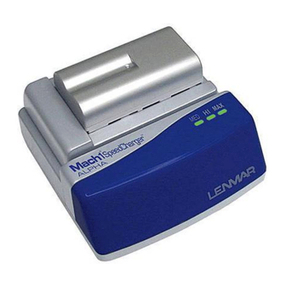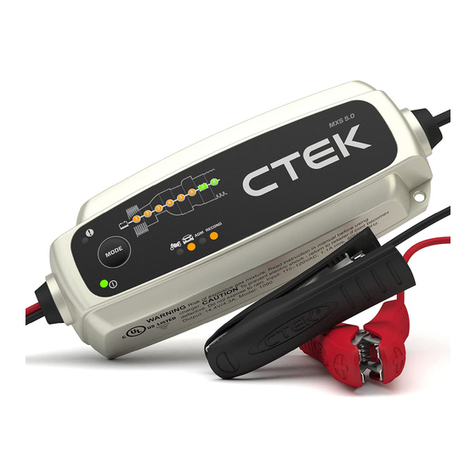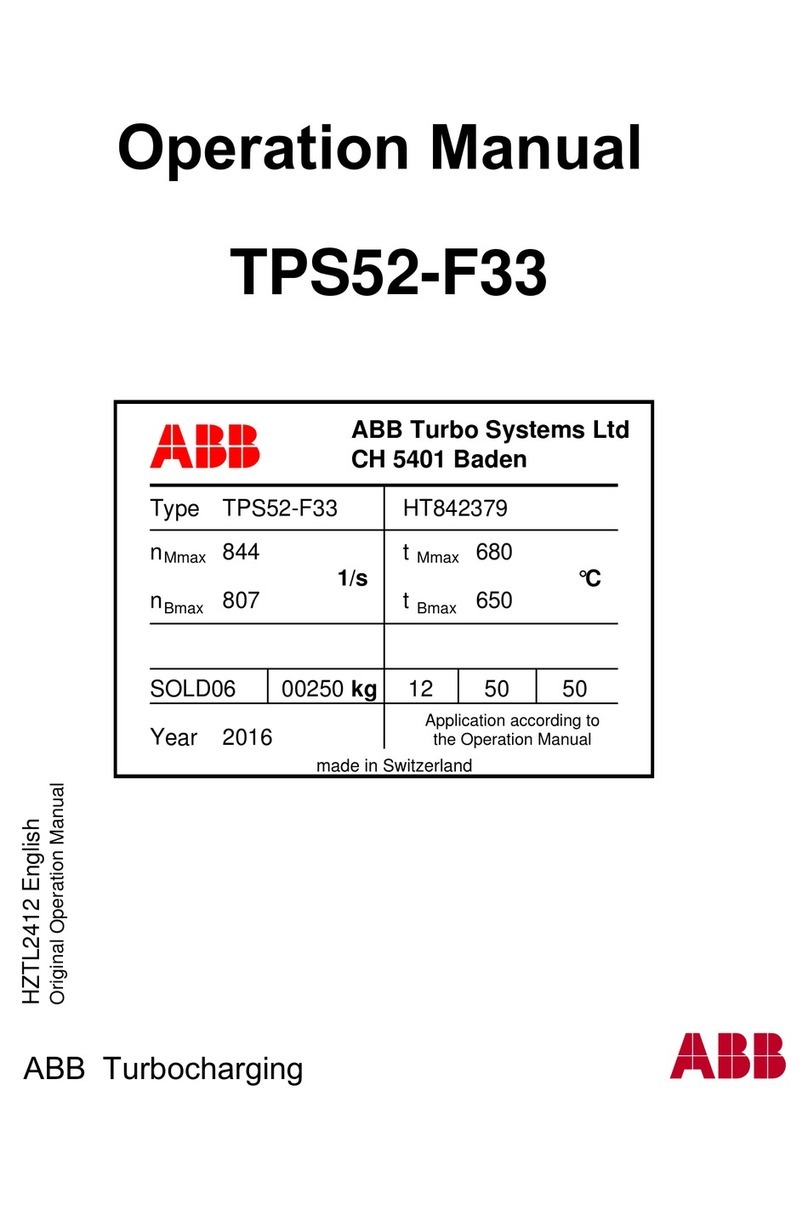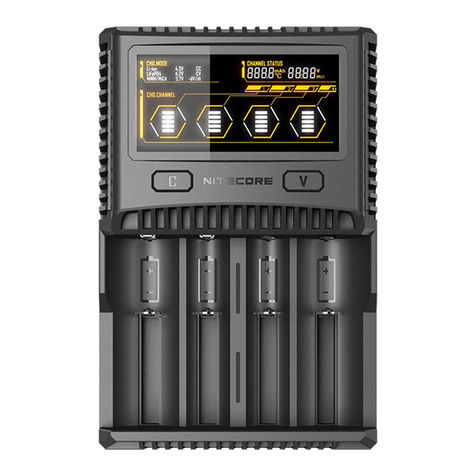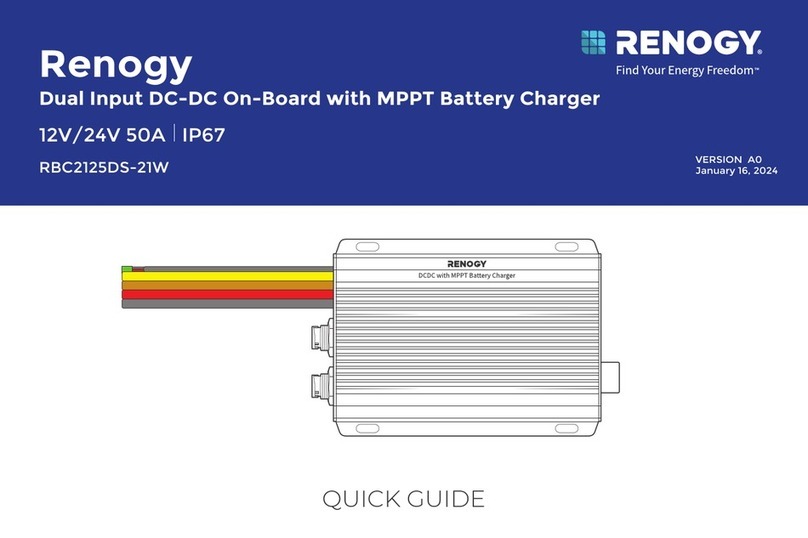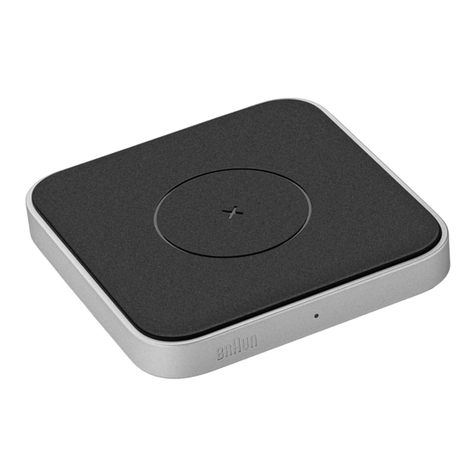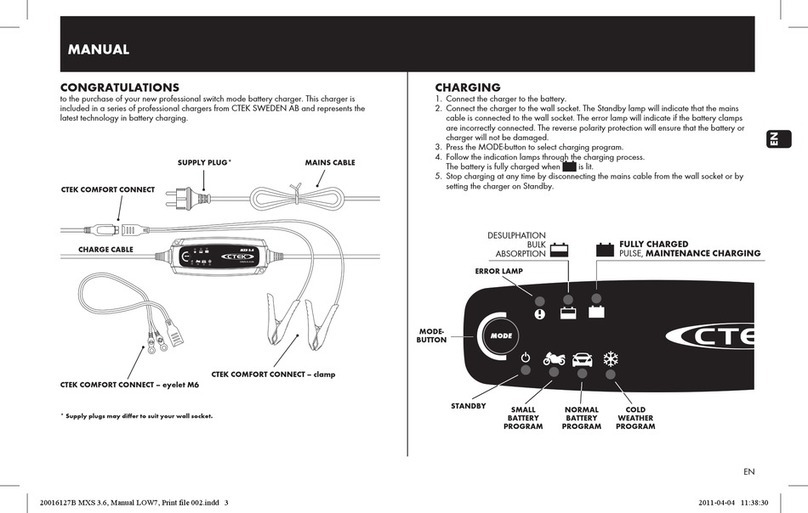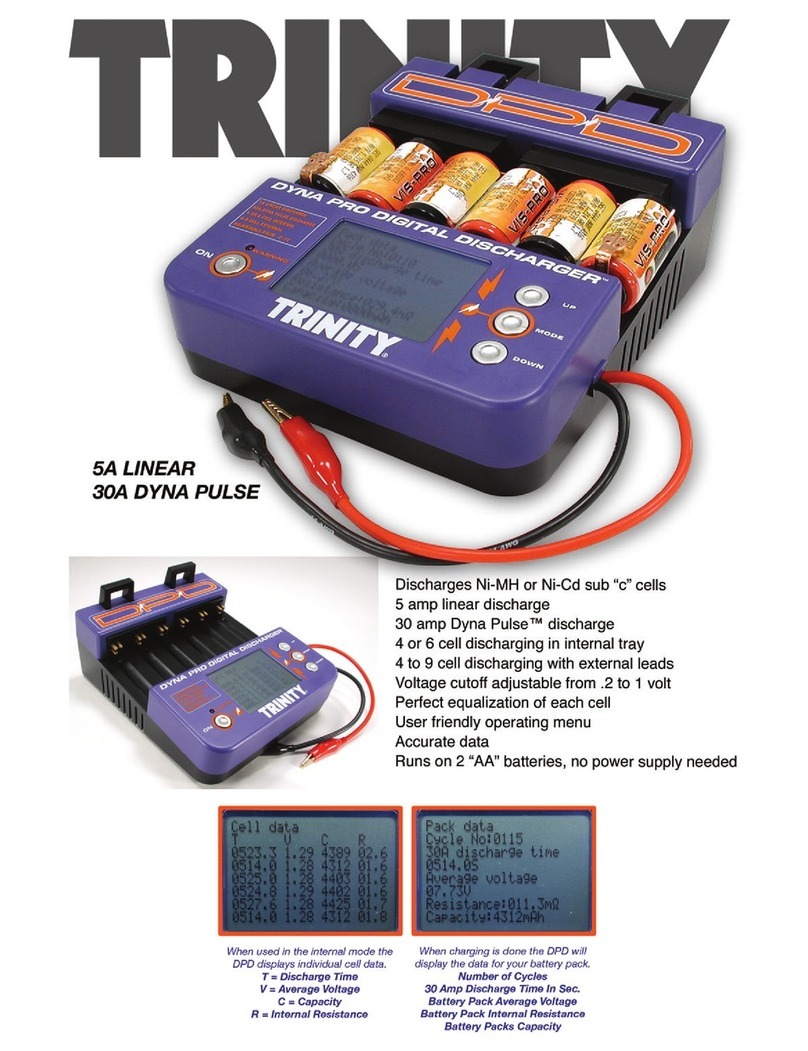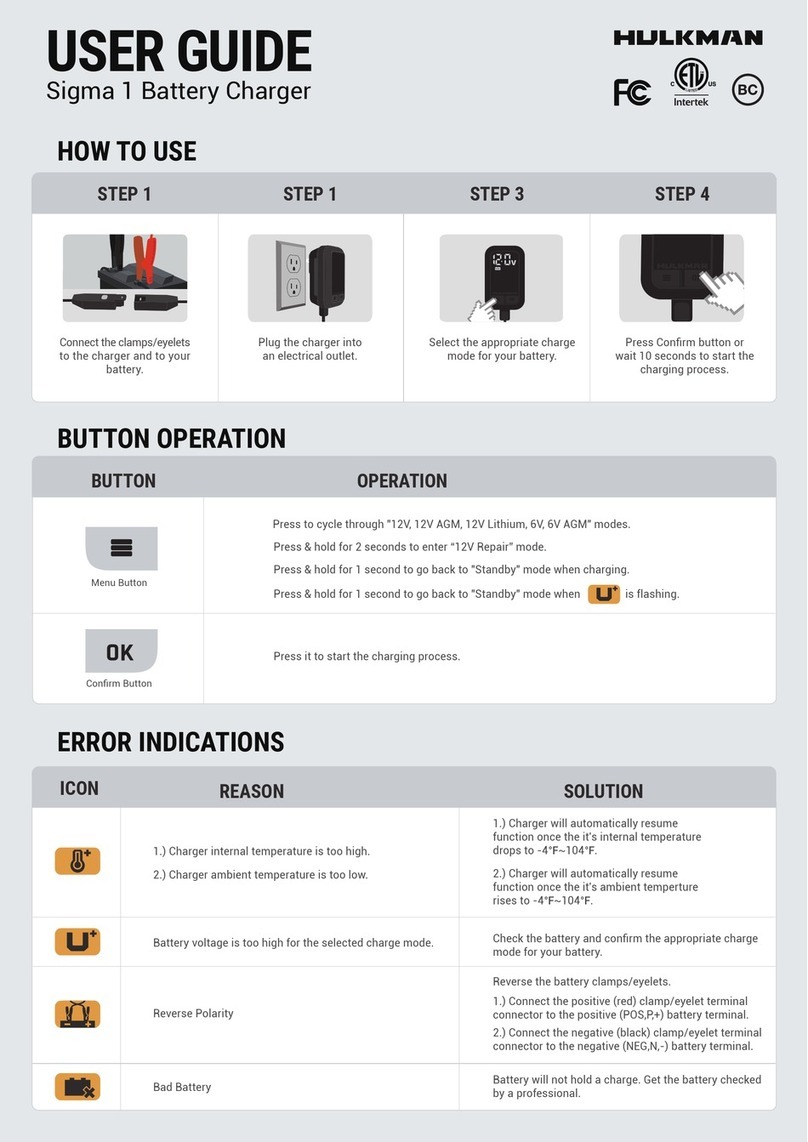
Important Safety Instructions
This document contains important instructions
and warnings that must be followed when
installing and maintaining the Wall Connector.
Warnings
Warning: Read all the instructions before
using this product.
Warning: This device should be
supervised when used around children.
Warning: The Wall Connector must be
grounded through a permanent wiring
system or an equipment grounding
conductor.
Warning: Do not install or use the Wall
Connector near flammable, explosive,
harsh, or combustible materials,
chemicals, or vapors.
Warning: Turn o input power at the
circuit breaker before installing or
cleaning the Wall Connector.
Warning: Use the Wall Connector only
within the specified operating
parameters.
Warning: Never spray water or any other
liquid directly at the wall mounted control
box. Never spray any liquid onto the
charge handle or submerge the charge
handle in liquid. Store the charge handle
in the dock to prevent unnecessary
exposure to contamination or moisture.
Warning: Stop using and do not use the
Wall Connector if it is defective, appears
cracked, frayed, broken, or otherwise
damaged, or fails to operate.
Warning: Do not attempt to disassemble,
repair, tamper with, or modify the Wall
Connector. The Wall Connector is not user
serviceable. Contact Tesla for any repairs
or modification.
Warning: When transporting the Wall
Connector, handle with care. Do not
subject it to strong force or impact or
pull, twist, tangle, drag, or step on the
Wall Connector, to prevent damage to it
or any components.
Warning: Do not touch the Wall
Connector’s end terminals with fingers or
sharp metallic objects, such as wire, tools,
or needles.
Warning: Do not forcefully fold or apply
pressure to any part of the Wall
Connector or damage it with sharp
objects.
Warning: Do not insert foreign objects
into any part of the Wall Connector.
Warning: Use of the Wall Connector may
aect or impair the operation of any
medical or implantable electronic devices,
such as an implantable cardiac
pacemaker or an implantable cardioverter
defibrillator. Check with your electronic
device manufacturer concerning the
eects that charging may have on such
electronic devices before using the Wall
Connector.
Cautions
Caution: Do not use private power
generators as a power source for
charging.
Caution: Incorrect installation and testing
of the Wall Connector could potentially
damage either the vehicle’s Battery
and/or the Wall Connector itself. Any
resulting damage is excluded from the
New Vehicle Limited Warranty and the
Charging Equipment Limited Warranty.
Caution: Do not operate the Wall
Connector in temperatures outside its
operating range of -22°F to 122°F (-30°C
to +50°C).
Safety Information
Safety Information 3
